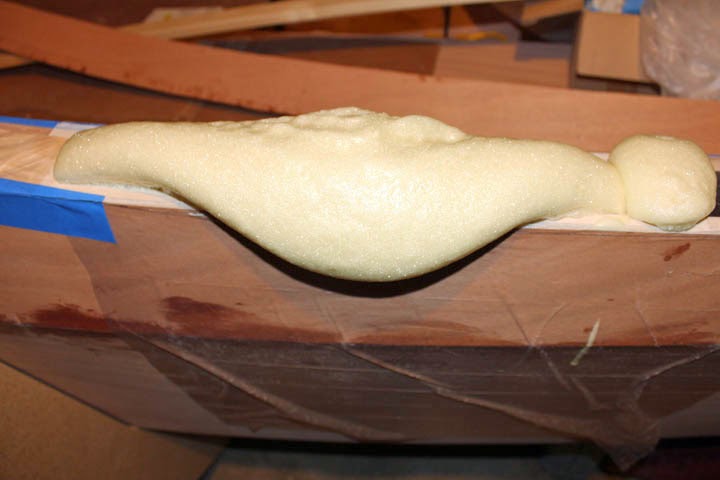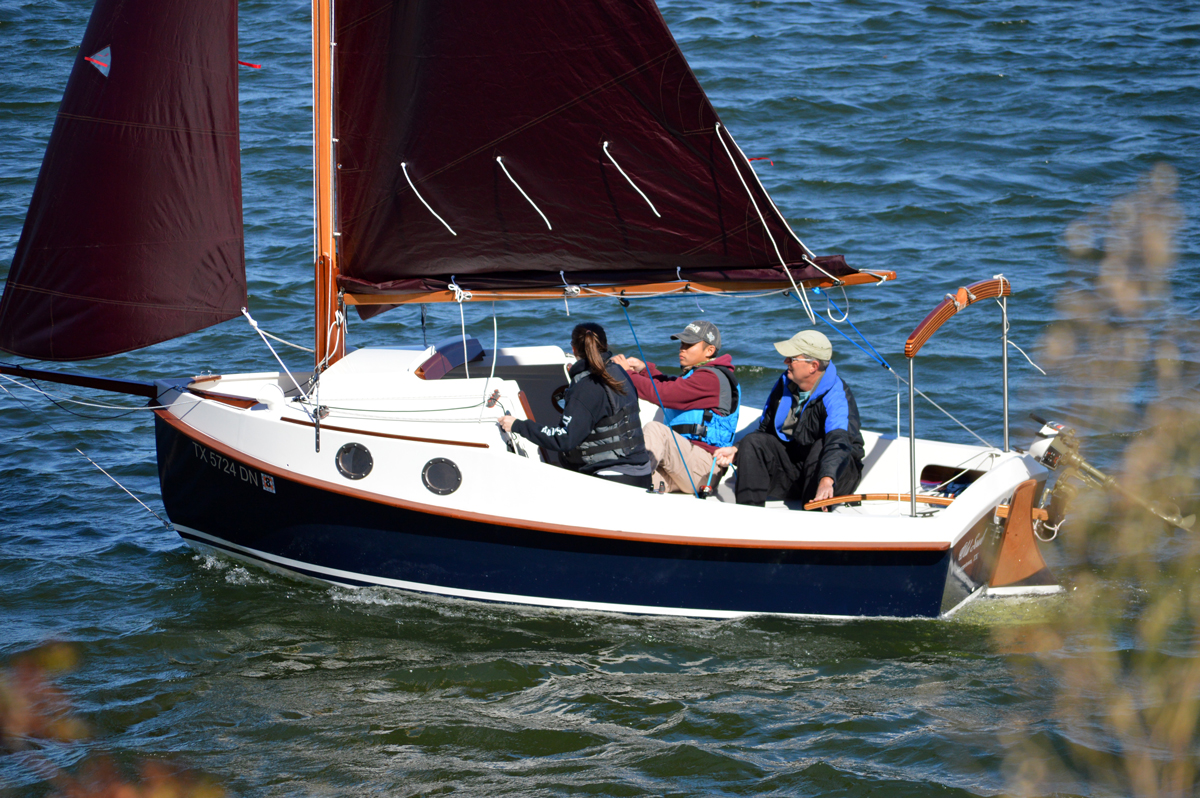I have been looking forward to finishing the installation of expanding polyurethane foam in the seatbacks, a project I started earlier but didn't have enough foam to finish.
 |
| Seatback Foam Overflow |
More of the two-part foam came yesterday and here's a shot of some of the cured foam that overflowed. I wanted some overflow to make sure the compartments were completely filled, but this is a bit much. I could have had less by doing a lot of tiny pours, but I didn't want to do a lot of tiny pours! I'm not that patient, and I think it would have been harder to get the foam in all the nooks and crannies doing it that way.
 |
| Seatback Foam Trimmed |
 |
| Wider Shot of Floatation Foam in Port Seatback |
The manual calls for cutting up bits of foam panels and cramming them in the seatbacks, the same as in the bow compartment and under the cockpit, but I felt doing it this way in the seatbacks made sense. Some builders have used expanding foam in the bow compartment also but I decided against it because if water gets in there I think it would be a lot harder to get out. The seatbacks are completely sealed and no water should ever get in them unless a hole is punched in the side, and if that ever happens I will probably have much bigger problems to contend with. (The bow compartment is sealed pretty well also, but I suppose the bow eye could eventually leak.)












